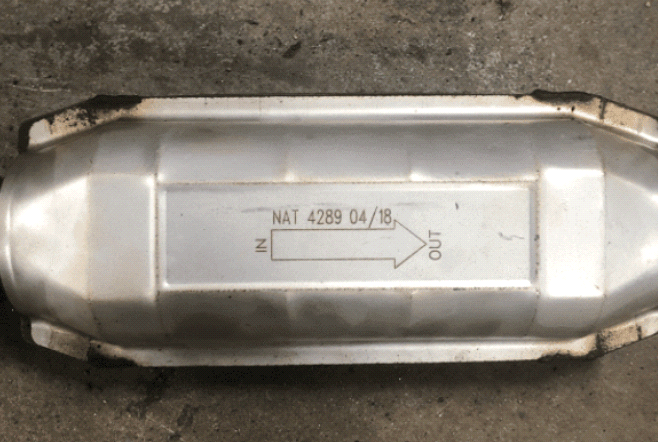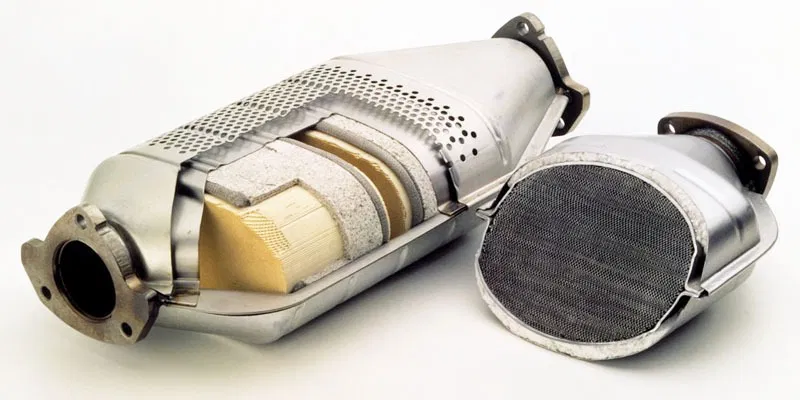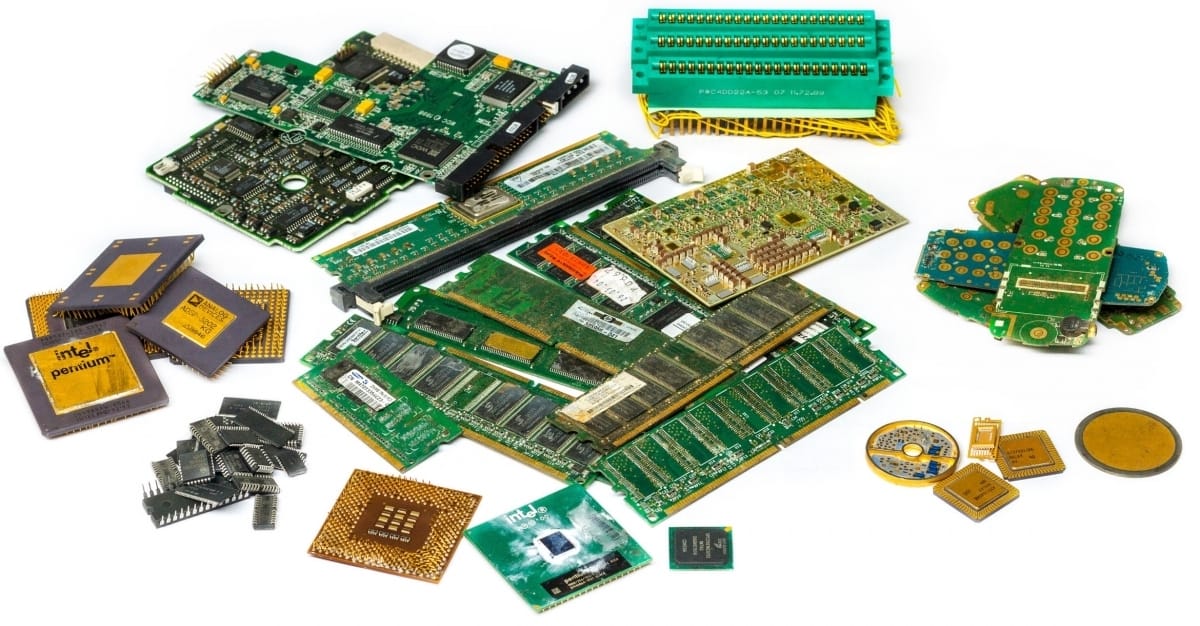Indications commonly associated with aftermarket catalytic converters include:
⦁ Presence of a silver shield
⦁ Arrow symbol on the shield
⦁ Serial numbers starting with “N”

To determine if your catalytic converter is aftermarket, you can follow these steps:
- Conduct research on your vehicle: Begin by researching the specific make, model, and year of your vehicle. Seek information about the original equipment manufacturer (OEM) catalytic converter that was originally installed in your vehicle. You can find this information in the owner’s manual or by contacting the vehicle manufacturer directly.
- Inspect the catalytic converter: Locate the catalytic converter beneath your vehicle, typically situated between the engine and the muffler along the exhaust pipe. Examine the catalytic converter for visible markings, labels, or engravings that indicate its origin or manufacturer. OEM catalytic converters often feature logos or part numbers from the original manufacturer. Aftermarket catalytic converters may exhibit codes with an “N” and have a silver-colored shield with an arrow. Additionally, there might be the words “Flow” or “Out” stamped on the aftermarket catalytic converter occasionally.
- Compare with OEM specifications: Compare the physical characteristics of your catalytic converter with the OEM specifications. This involves assessing dimensions, shape, and the arrangement of internal components. Detailed information about the OEM catalytic converter can be found in the vehicle’s documentation or by consulting a dealership or authorized service center.
- Consult a professional: If you’re uncertain about the authenticity of your catalytic converter, it is advisable to seek the opinion of a qualified mechanic or automotive expert. These professionals have experience in identifying different types of catalytic converters and can provide a reliable assessment.
- Consider emissions regulations: Keep in mind that aftermarket catalytic converters must comply with local emissions regulations to be considered legal. If you suspect your catalytic converter is aftermarket, ensure it meets the emissions standards in your area. You can consult local authorities or an emissions testing center to confirm the requirements.
Remember, tampering with or removing a catalytic converter may be illegal in many jurisdictions due to environmental regulations. Always comply with local laws and regulations when modifying or replacing vehicle components.
For further assistance, you can contact us or visit our facility in Dubai, United Arab Emirates.
Related Blog
The Precious Metals Market: Palladium, Rhodium,…
Navigating the Precious Metals Market: Insights into Palladium, Rhodium, and Platinum Precious metals have long been a cornerstone of […]
How Stonecore Captures XRF Results for…
How Stonecore Captures XRF Results for Automotive Catalysts At Stonecore, we’re committed to using cutting-edge technology to analyze your automotive […]
Don’t Trash It: A Guide to…
Don’t Trash It, Repurpose It: A Guide to E-Scrap Recycling in United Arab Emirates We live in a world obsessed […]




